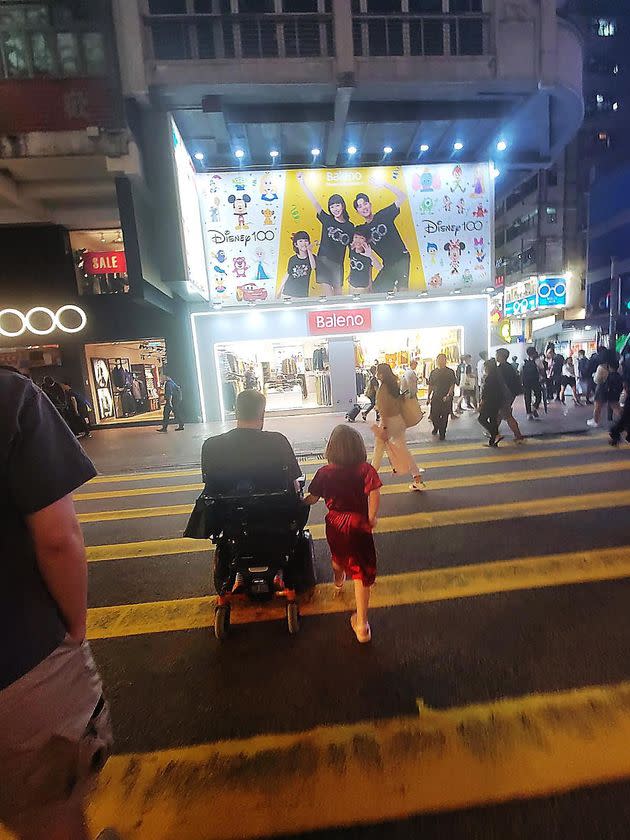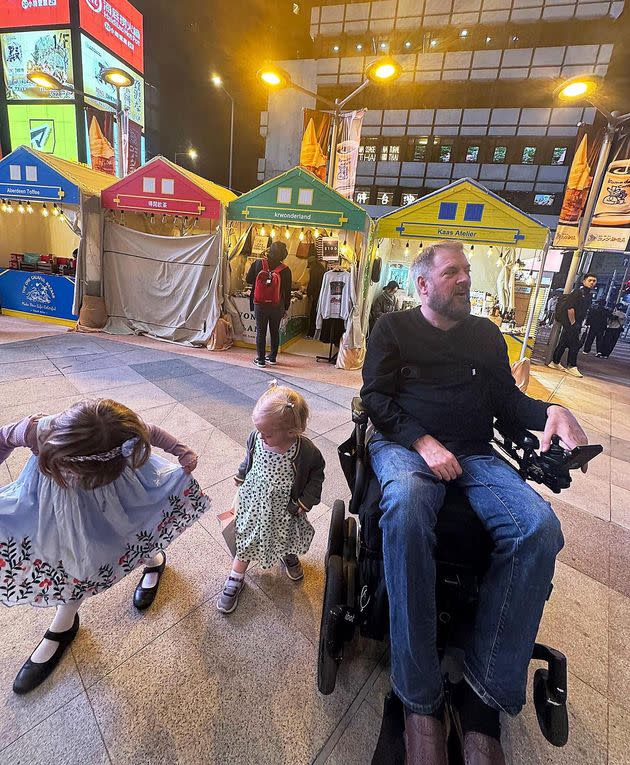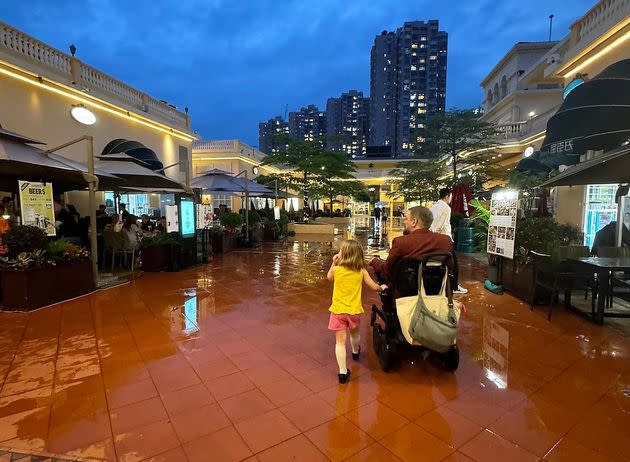What Navigating Hong Kong In A Wheelchair Taught Me About Accessibility Culture

“Igotthe job. Oh man, Hong Kong? Should we?” I asked my wife.
I’m aquadriplegic wheelchair user. With a 3-year-old daughter and another on the way, moving all of us across the world seemed like the hardest possible thing at that moment. Obviously, plenty ofwheelchair users live in Hong Kong, but it seemed absolutely extreme for us to add one more complication to our already full lineup.
I had never been to Hong Kong. The job offer came at the height of thecoronavirus pandemic, and Hong Kong was not allowing visitors or tourists, so I could not take a trip before making a decision.
Hours of advice from trusted friends boiled down to: It’s crowded. It’s hilly. There are steps everywhere. The housing is tiny and expensive. How will you navigate that in a wheelchair?
But I’d always dreamed of having an overseas job, and I knew we had to take our moonshot. So, to make it work in Hong Kong, I needed to reconsider what accessibility means and how I navigate my disability and independence.
In the U.S., independence for me is things like being able to drive where I want, go to any store I want, and use any sidewalk I want. But Hong Kong requires a different approach. It has different barriers, but I soon found it also has different solutions.

Several studies have lookedat various approaches to accommodating disability incollectivistic versus individualistic societies. Individualistic societies often take what is considered a rights-based approach, where disabled individuals expect to move through the world entirely on their own where possible. Collectivistic societies often see disabled people as part of a spectrum in which everybody needs some form of assistance at some point.
Greater China is more collectivist than the U.S. While British colonial history moderates this to an extent in Hong Kong, Chinese culture creates an approach to disability that I needed to adapt to. Each system has pros and cons, but I had to learn to adjust.
When we arrived, I was shocked to see people in wheelchairs everywhere. I’ve lived in cities across the U.S., and most days, I would never see another wheelchair user on the street. In Hong Kong, I see several every time I head outside. Apartment blocks and elevators mean that far more housing units are accessible and in closer proximity. But the housing is small, and people (including wheelchair users) seem to spend more time in public spaces than in the U.S.
The trade-off is that in the U.S., I felt like I had larger private spaces to be in, but I still somehow felt removed from public spaces. In Hong Kong, we can get out and about and are more publicly visible than where I used to live in Southern California, Denver and Cleveland.
Like some other lucky wheelchair users, I drive a car while in the U.S. But an adapted vehicle isprohibitively expensive, and most housing is low-density, so I also know many more folks with no car, no nearby accessible taxis, and no businesses within walking distance.
At first, in Hong Kong, I missed having a car and going where I wanted when I wanted. But Hong Kong’s public transit is a godsend for the blind, wheelchair users, epileptic persons, and more. Many people own cars, but not entirely dependent on them opens up so much of the city for disabled residents.
In my experience, public transportation is generally more difficult in the U.S. This is the case both in cities (such as New York, whereonly 31% of subway stations are accessible) and suburban areas (which weredesigned with cars in mind). Hong Kong’s transit system is entirely accessible, even if sometimes finding the accessible entrance is arduous.
Planners in Hong Kong and the U.S. face different challenges. It’s an oversimplification, but I find public spaces and transportation easier to navigate from a wheelchair in Hong Kong, but commercial and private spaces are easier in the U.S.
But while transit can more easily get wheelchair users around the city, the businesses are usually inaccessible. Still, there is such an overwhelming number of businesses that if you can’t comfortably get to one, there’s likely another, more accessible one nearby.

Hong Kong’s stores are tight for everybody, not just wheelchair users. And the solution for this was one of the more difficult things for me to get used to: Nearly every family in Hong Kong employs adomestic helper. Helpers are embedded into Hong Kong’s culture and economy. Though this labor system is embedded across much of Asia, for an outsider like myself, it has been difficult to reconcile both the exploitative nature and the assumption of dependency that comes with it.
When I first entered a grocery store, the shopkeeper asked why my helper wasn’t doing this task for me. The difficulty I was having wasn’t because the store couldn’t fit my chair — I wasn’t taking advantage of the readily available solution. If the goal of accessibility is to open up similar opportunities to all regardless of (dis)ability, this type of accommodation makes me like everyone else. I may not always be able to get into a business, but (just like everyone else) I also don’t always need to.
Hongkonger’s reliance on helpers is glaring in some circumstances. For instance, I once took my daughters to an indoor play area and was told I wouldn’t be allowed to enter with my wheelchair. The manager told me to send my girls back with my helper instead.
Thankfully, I was familiar with Hong Kong’sDisability Discrimination Ordinance, and I persisted until I was allowed in. However, reliance on domestic helpers can sometimes become an excuse for not thinking through individual needs for disabled accommodation.

As a wheelchair user living in several different spaces, I’ve learned that accessibility solutions are not one-size-fits-all for people or cities. Is one approach to accessibility better than the other? No, the adaptation must fit the circumstance. We have to consider the end goal of accessibility if we want to have the right approach.
Here in Hong Kong, I’ve learned I could be like everyone else, but not in the way I was used to doing so. “Being like everyone else” means a different thing in Hong Kong and the U.S. and my accessibility expectations had to also adapt for me to appreciate that.

